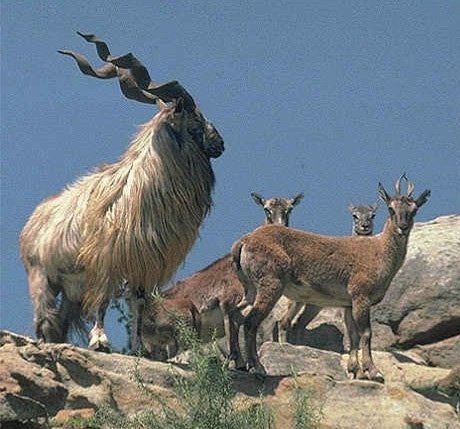High Asia Herald Report
The Khyber Pakhtunkhwa (KP) Wildlife Department team and a WWF-Pakistan’s filmmaker captured a Himalayan lynx hunting a markhor on the steep, rocky cliffs of Chitral valley.
According to an official statement, this is for the first time that a nocturnal hunter and highly elusive animal has been filmed in the area.
The lynx, locally considered as a rare species, is known to be present in Chitral, as well as other northern areas of Pakistan including Gilgit-Baltistan, read the statement, adding that the exact distribution and range are not known.
Recently, WWF-Pakistan’s filmmaker Nyal Mueenuddin and the KP Wildlife Department team were on a mission to Chitral to film the Kashmir markhor.
While filming a group of markhors outside Chitral town, the crew spotted a Himalayan lynx preparing for a hunt. The lynx did not attack the large group of passing markhors, but it caught a yearling markhor, which was grazing by the riverside along with its mother.
According to the team, when the lynx was sure that the prey had been killed, it retreated to a nearby tree to rest. The camera team waited for about an hour and a half before the lynx returned to the site of the hunt and began eating the carcass.
With a river separating the crew and the lynx, the filmmakers were able to move close to the lynx feasting on the markhor. Afterwards, the lynx returned to the cliffs where it perched itself on a rock to rest and digest. The crew also captured drone images of the cat on the rock.
Regarding filming of this hunt, Director General, WWF-Pakistan Hammad Naqi Khan said that the Himalayan lynx is one of the last remaining apex predators in the area.
Commenting on this rare shoot, Muhammad Idrees, Divisional Forest Officer (DFO Wildlife) said that the lynx attacks on ungulates, such as the Himalayan ibex and markhor, have been reported for the past many years and are common in Chitral, especially in Chitral Gol National Park.
He was of the view that humans are the biggest threat to wildlife due to an increase in the human population, retaliatory killings, habitat loss, habitat fragmentation, deforestation and lack of awareness regarding the ecosystem and food chains.
Idrees said that the lynx competes with the snow leopard and wolf for food in its habitat range. ‘Our wildlife teams are vigilant and work in close coordination with local communities regarding the protection and conservation of biodiversity in the area. To assess the population of this species in Chitral, the Wildlife Department is also planning to conduct a survey in the near future,’ he added.
In recent years, the population of the Kashmir markhor, once nearly extinct in the area, has grown substantially, thanks to community-based conservation actions taken by WWF-Pakistan, the KP Wildlife Department.

The High Asia Herald is a member of High Asia Media Group — a window to High Asia and Central Asia

